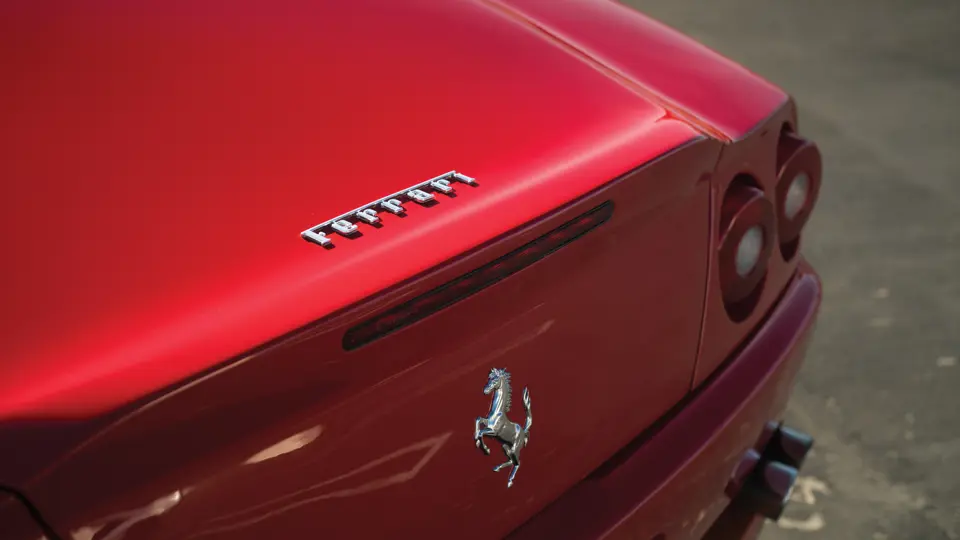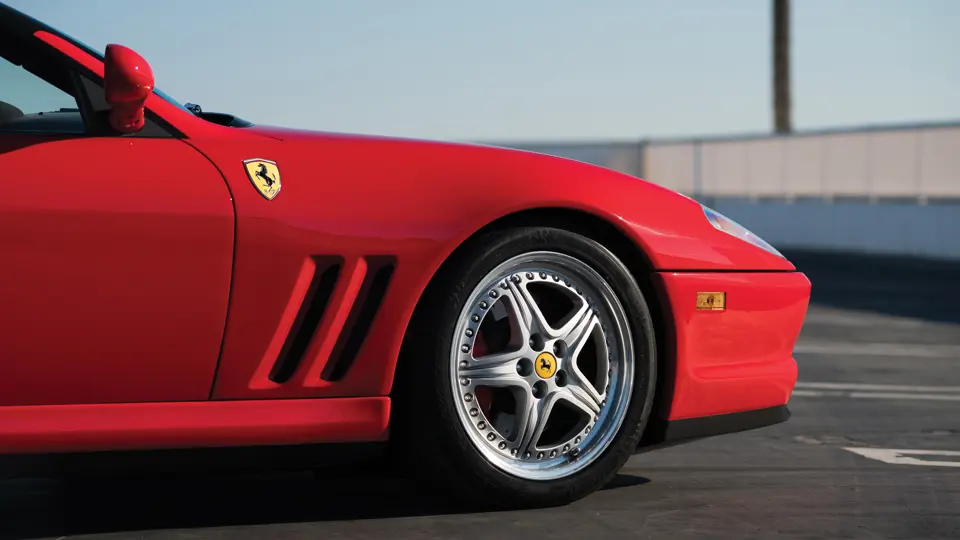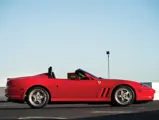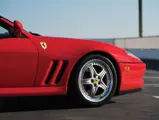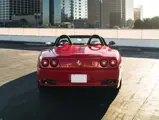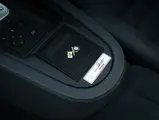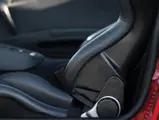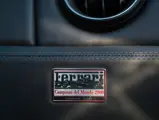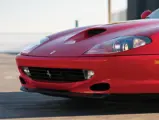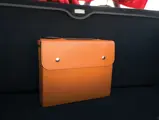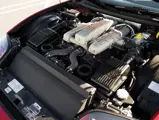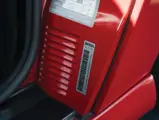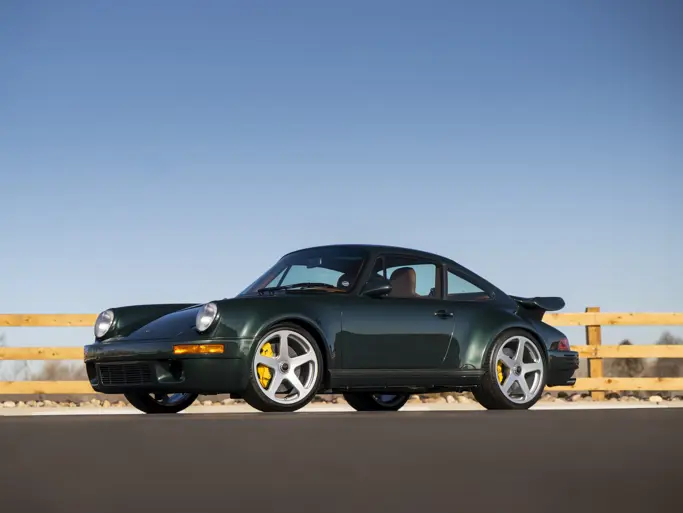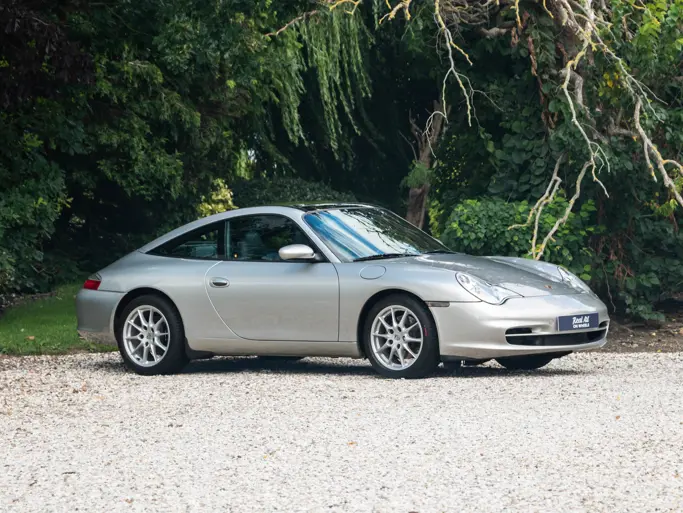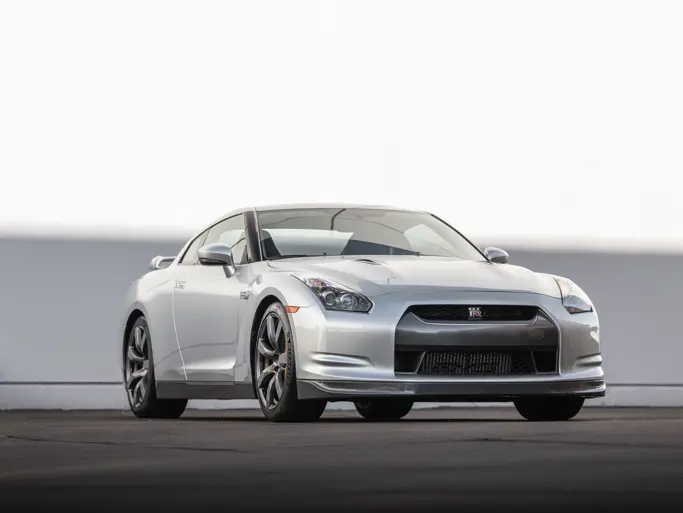When Ferrari chose Germany’s famed Nürburgring as the place where it would debut its 550 Maranello in the summer of 1996, the automaker signaled in a rather unsubtle fashion that it wanted to amplify its grand touring car’s performance credentials. Ferrari sought to honor the legendary 365 GTB/4 Daytona, both in the 550’s proportions and in its performance. It was immediately well-received as a replacement for the 456, a model lauded for its sonorous V-12 engine and comfortable interior but derided for its awkward styling and soft road-holding.
Penned by Pininfarina’s Lorenzo Ramaciotti, the 550’s classic long hood, tall greenhouse, and short tail proportions were still an homage to the Ferrari 250, like the earlier 456, but its details were far sharper. Fixed headlights replaced the dated (and troublesome) pop-up units in the 456, while the quad round taillights at the rear remain as relevant in Ferrari’s lineup today as they were in 1996.
Inside, the plain dashboard was shelved in favor of a far more evocative, dual-cowl setup. Roominess, not often a Ferrari virtue, has helped the 550 remain desirable today. Comfortable, multi-adjustable seats swathed in fine Italian leather and switchgear arrayed logically—not haphazardly as was so often the case from Ferrari—brought it into the modern era.
Under its hood, the 550’s V-12 produced 479 hp and was paired to a rear-mounted transaxle with a six-speed manual transmission, rowed through a classic polished gate. The tubular space frame saved weight and added rigidity. Underneath, adjustable dampers dialed in a firmer or a more compliant ride. Despite its short wheelbase, the 550 Maranello excelled at long-distance jaunts. Hydraulically assisted, speed-sensitive power steering helped the 550 track arrow straight on the highway while still providing considerable thrills on the race track. Hence, the Nürburgring debut.
Ferrari once again looked to its past in 2000 when it took to the Paris Motor Show floor with its eye-catching 550 Barchetta convertible. In a nod to boulevardiers, the Barchetta’s flimsy cloth top was basic at best, an emergency-only unit designed to protect the car’s interior should rain clouds begin to form. To illustrate this, Ferrari put a 70 mph maximum top speed warning on the flimsy top. Instead, the 550 Barchetta was designed to entice the company’s owners to enjoy a sunny day behind the wheel.
The 550 Barchetta featured a more deeply raked windshield with pillars that disappeared toward the top of the windshield to improve its aerodynamics. Its tail was reshaped to complete the look, and the long trunk lid gave way to a pair of rollover hoops behind each seat. Curiously, the 550 Barchetta actually had more cargo capacity than its coupe sibling, even if it was hardly the most practical version of the 550.
Ferrari initially planned to build 444 examples of the 550 Barchetta, but four more were added to the initial production run to appease an increasingly important Japanese market superstitious about the number four.
Number 357 of just 448 built, this 550 Barchetta shows just 9,500 original miles and was sold new in the Boston area. Subsequently, it was brought to California, then Utah, and finally Alberta. Service and registration records indicate that it accumulated mileage regularly, but sparingly. All servicing, including a recent, thorough detailing, has been performed by Ferrari dealerships, and it was recently fitted with new high-performance tires. It is painted Ferrari’s signature Rosso Corsa over a desirable grey leather interior and retains its factory equipment, including Barchetta-specific sports seats, a Becker audio system, and glossy carbon interior fiber trim. Its switchgear shows as-new, with none of the “sticky buttons” common to Ferraris of this era.
As interest continues to build for modern Ferraris, the rare 550 Barchetta is sure to continue its rise in collectability and value.




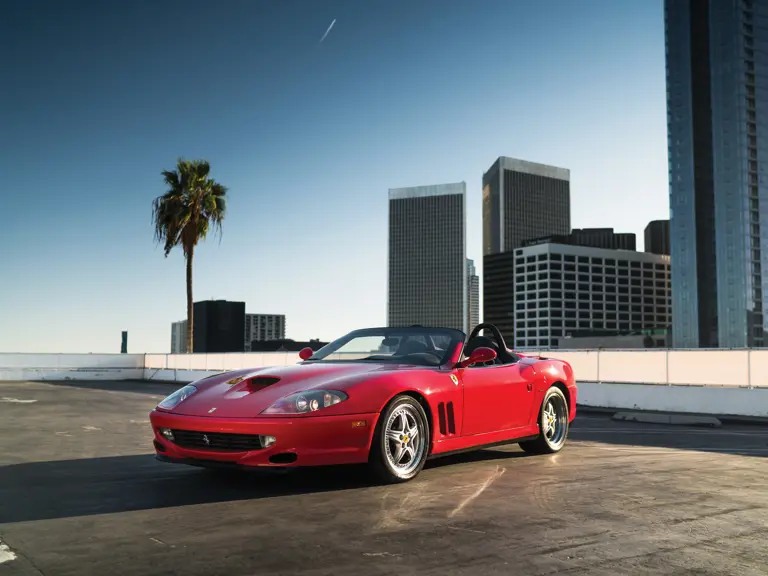
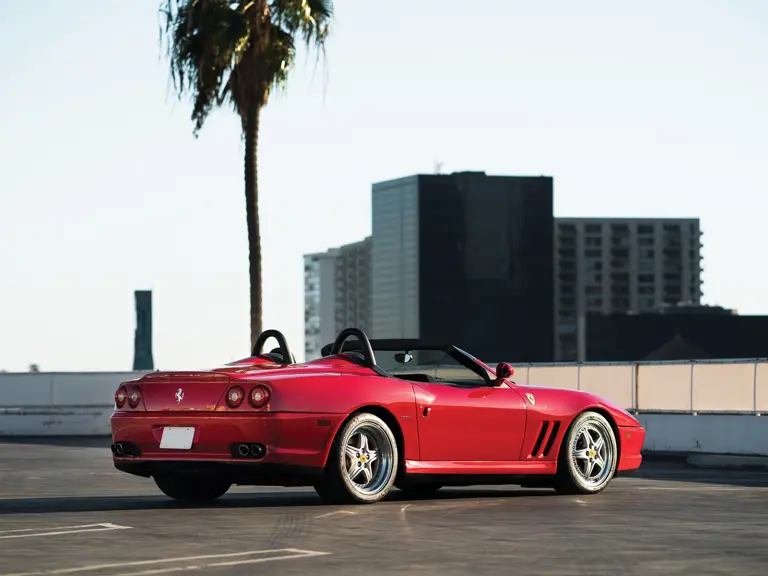
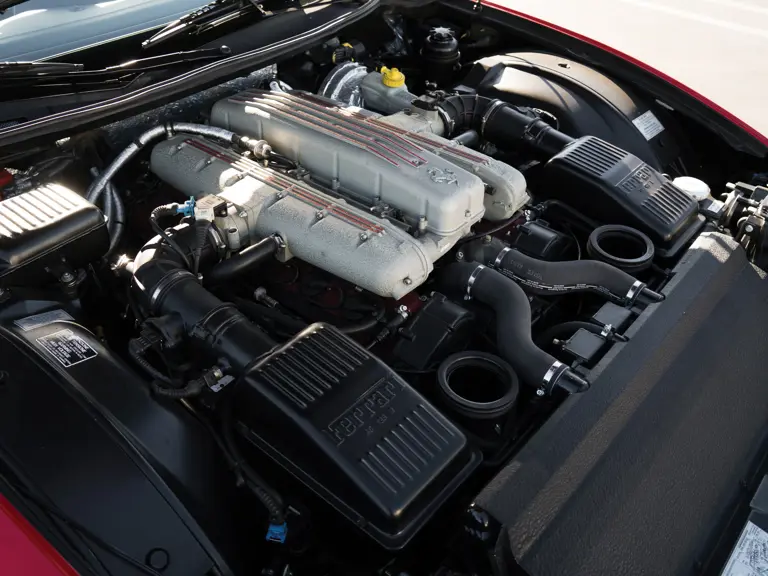
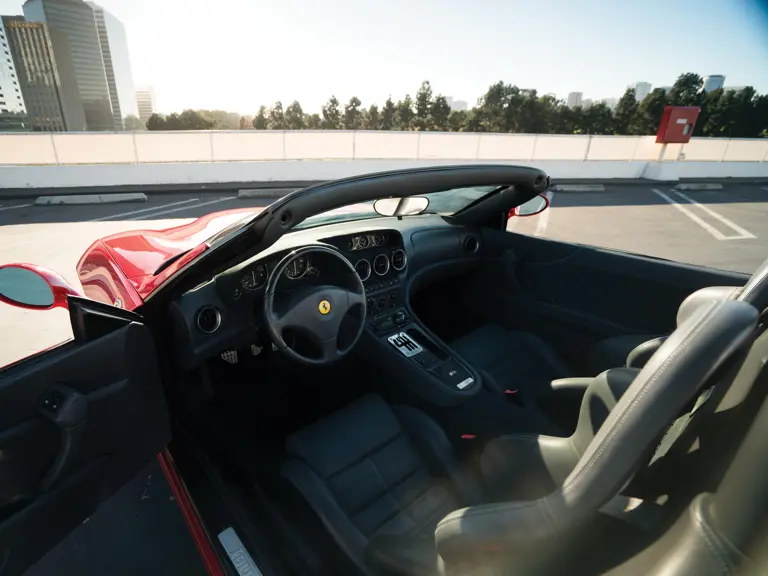


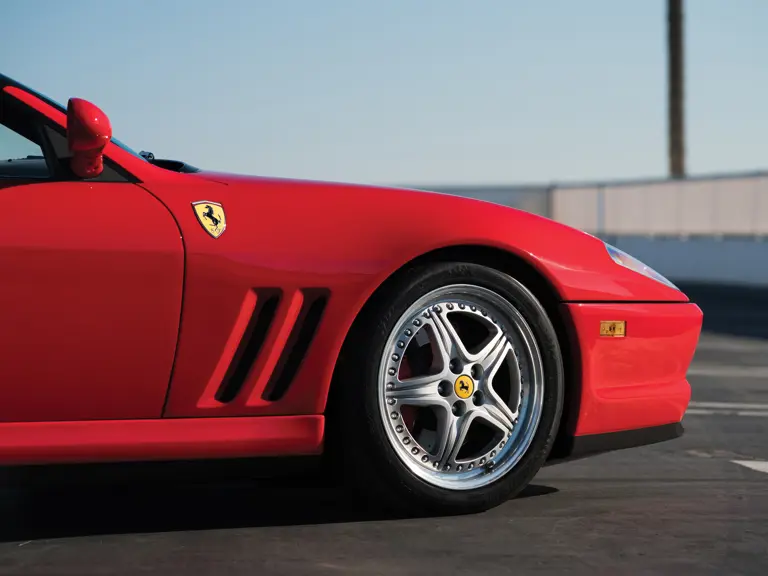
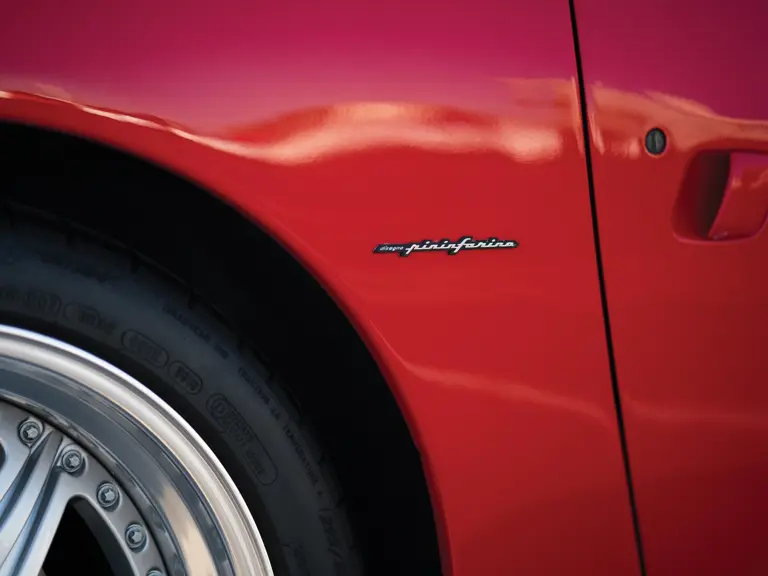
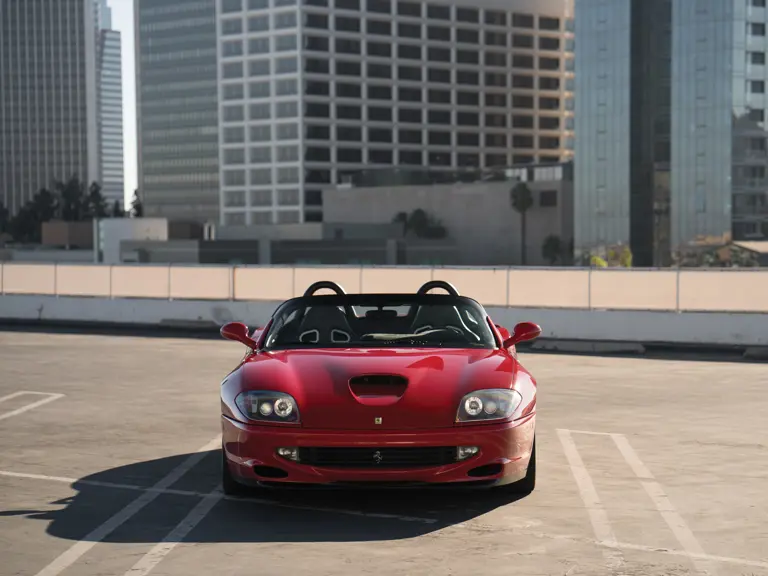
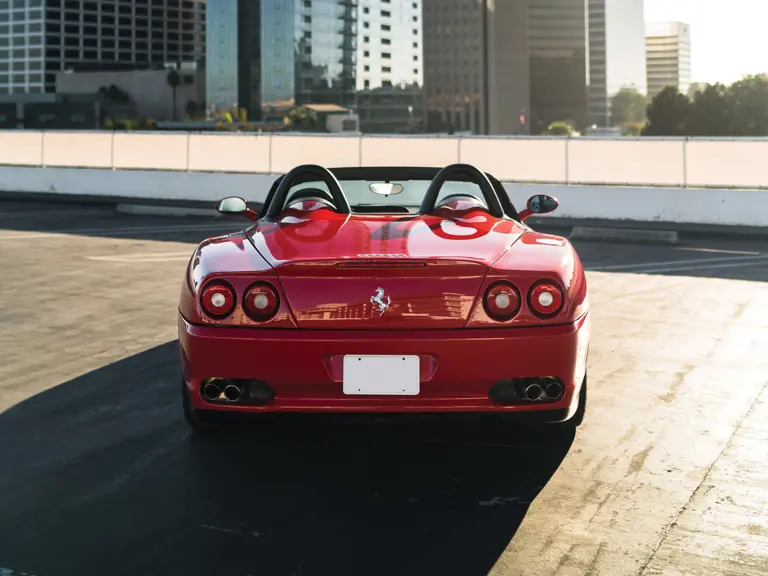
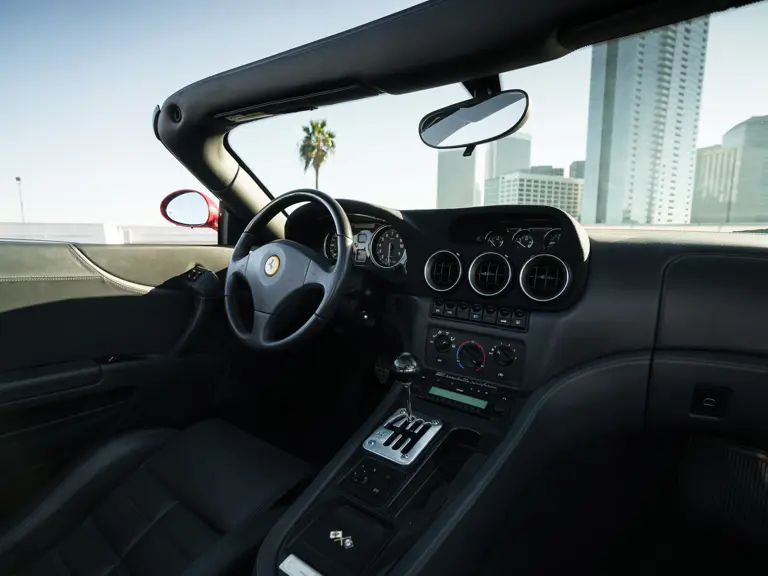
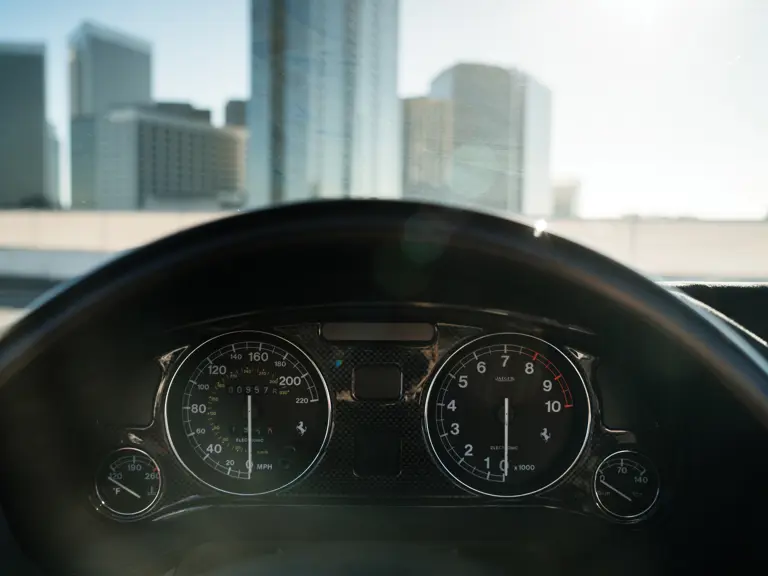
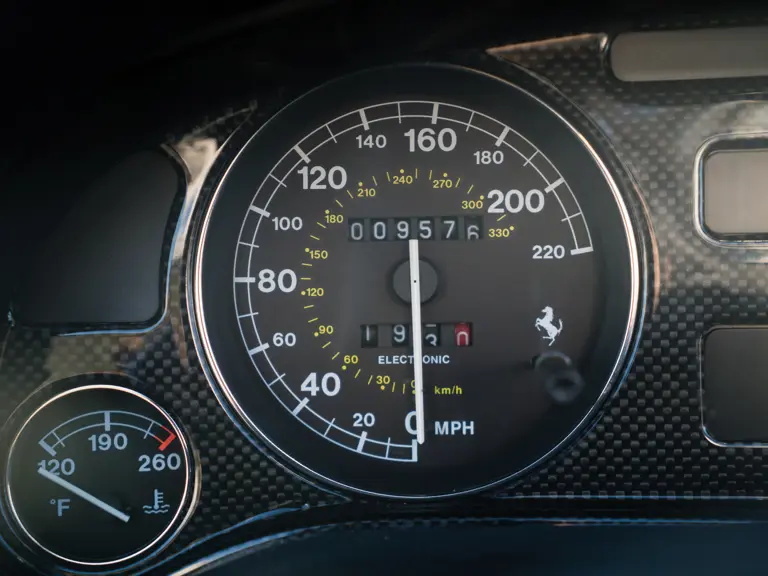



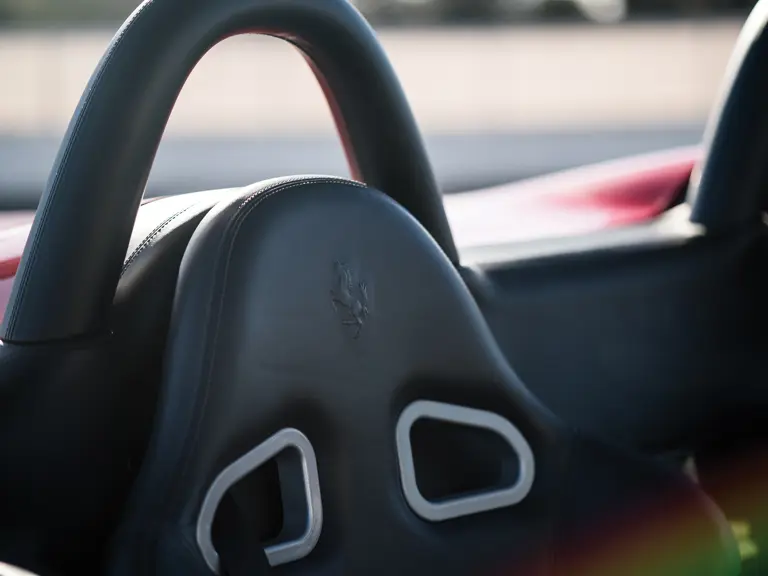
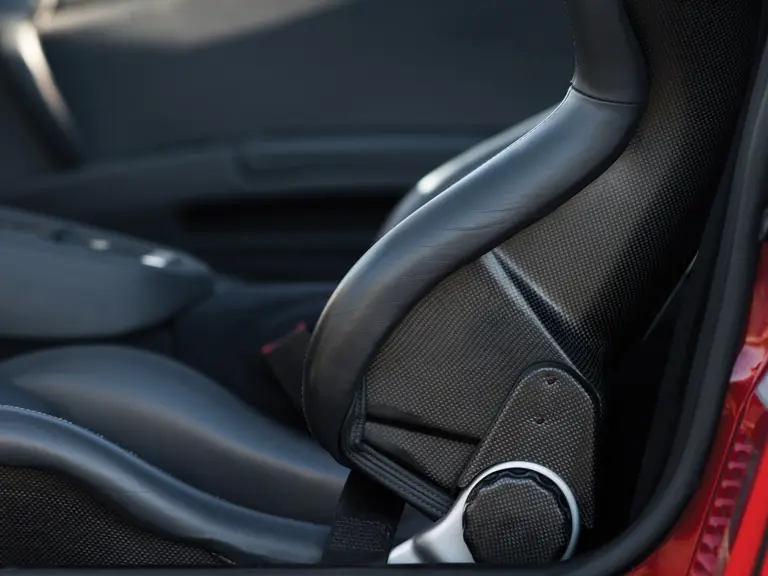
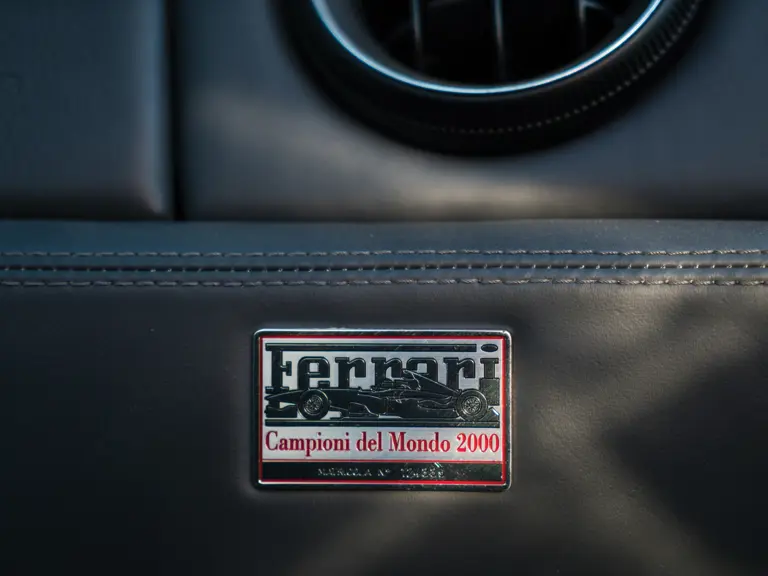

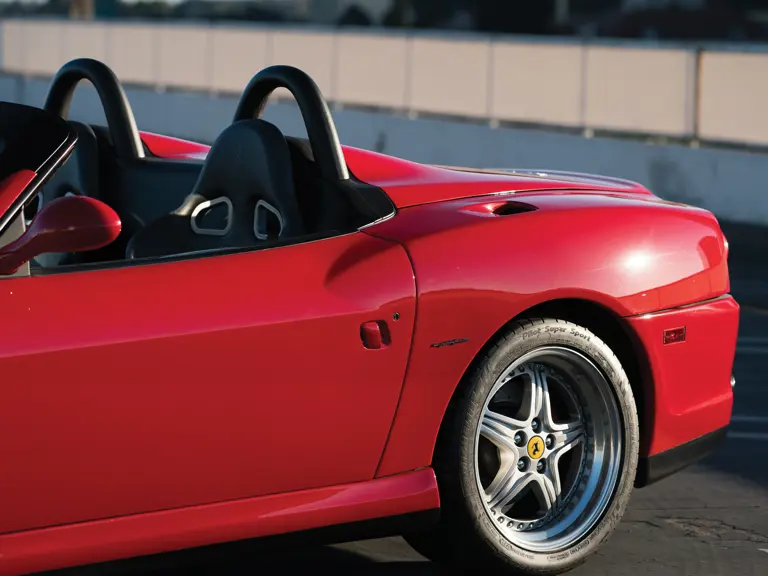

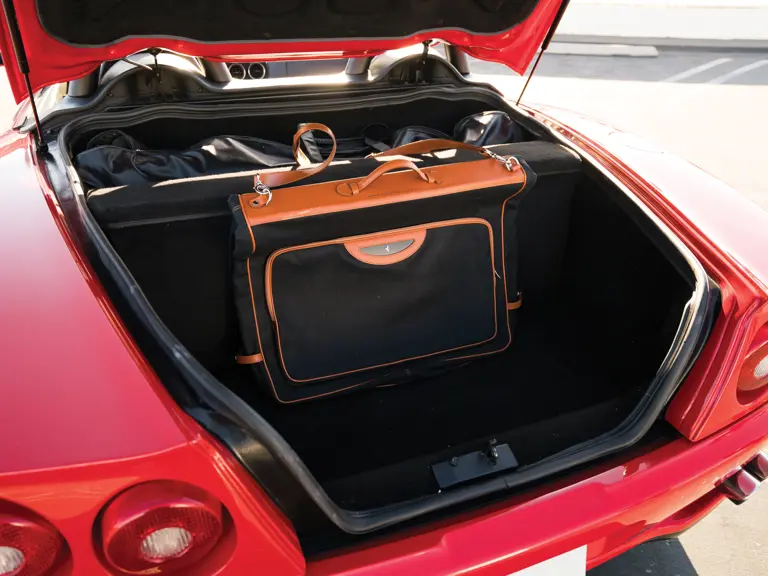

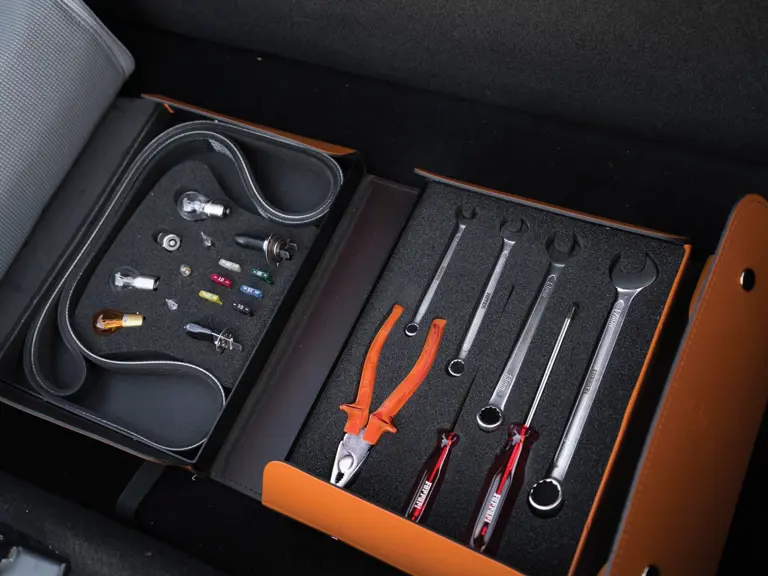
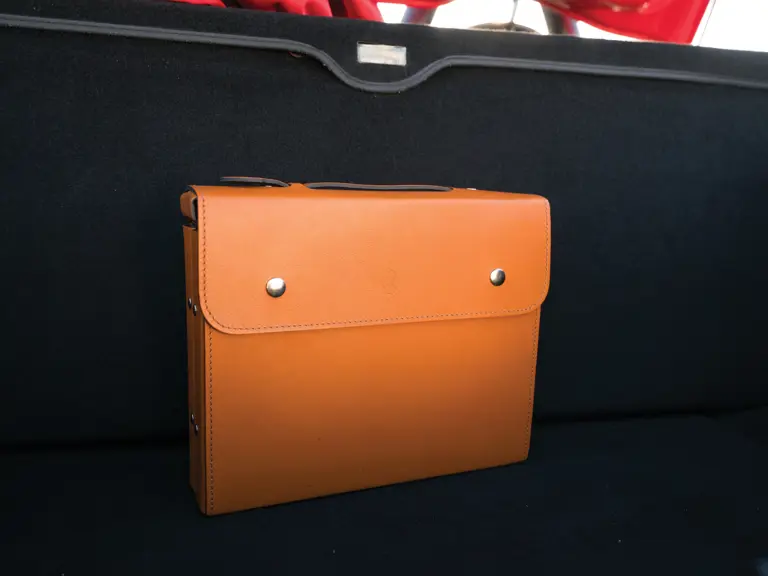
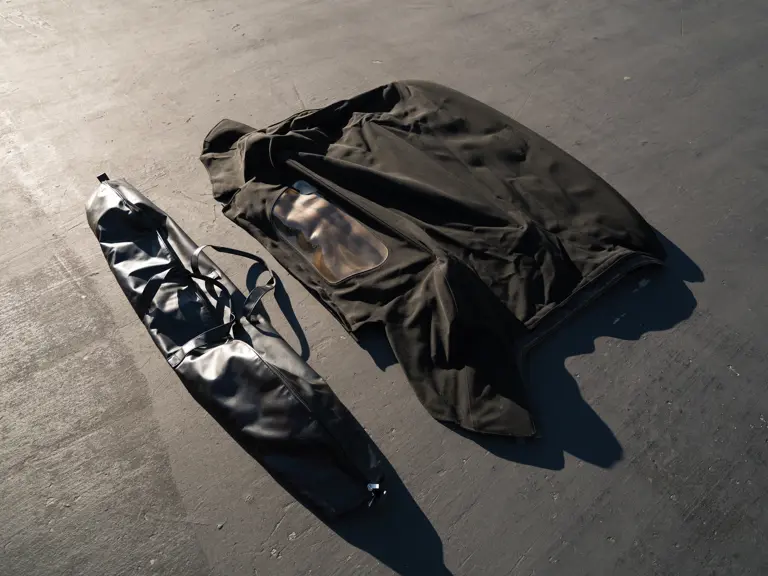

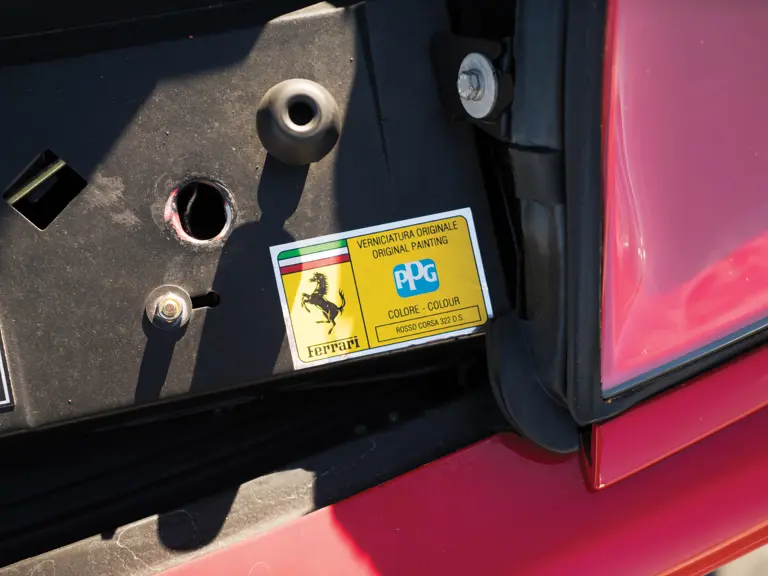
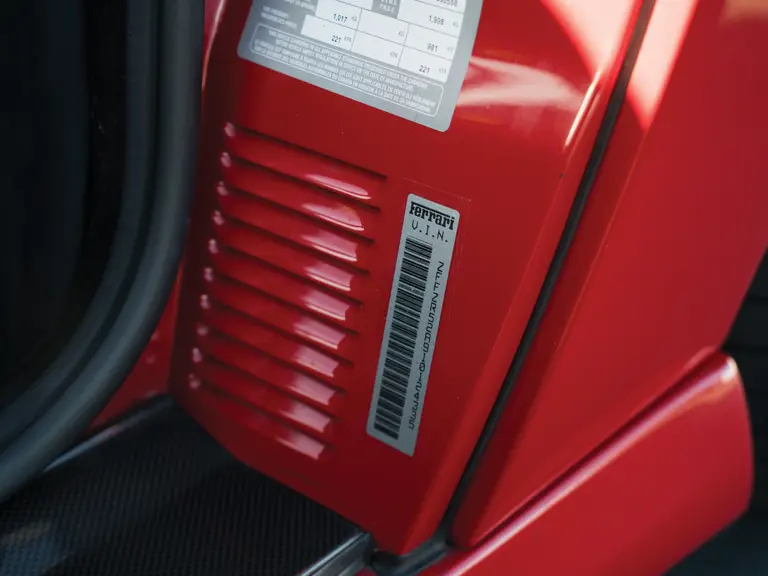
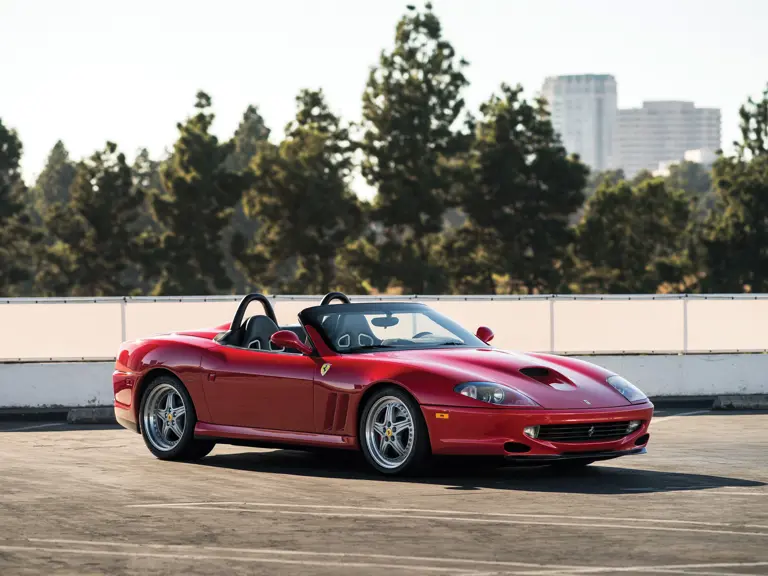
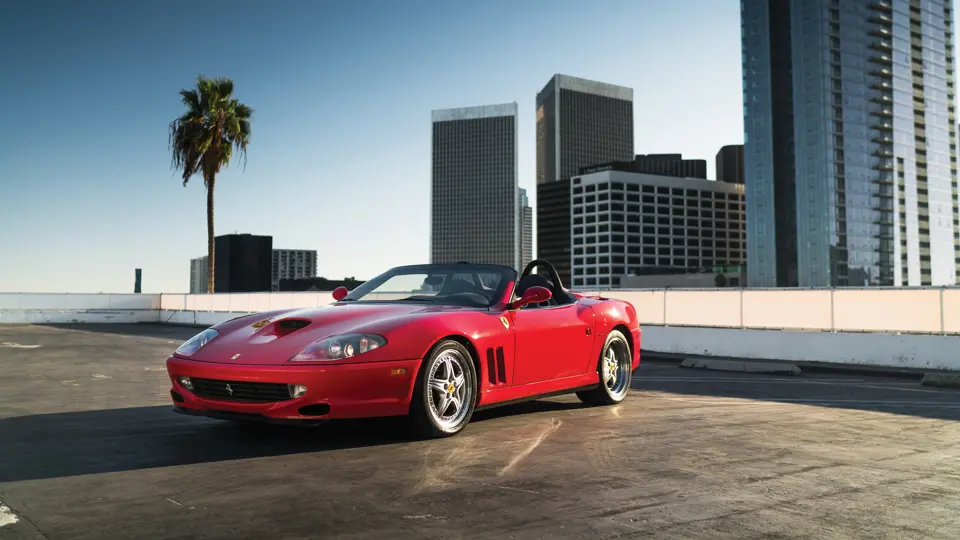
 | Phoenix, Arizona
| Phoenix, Arizona

